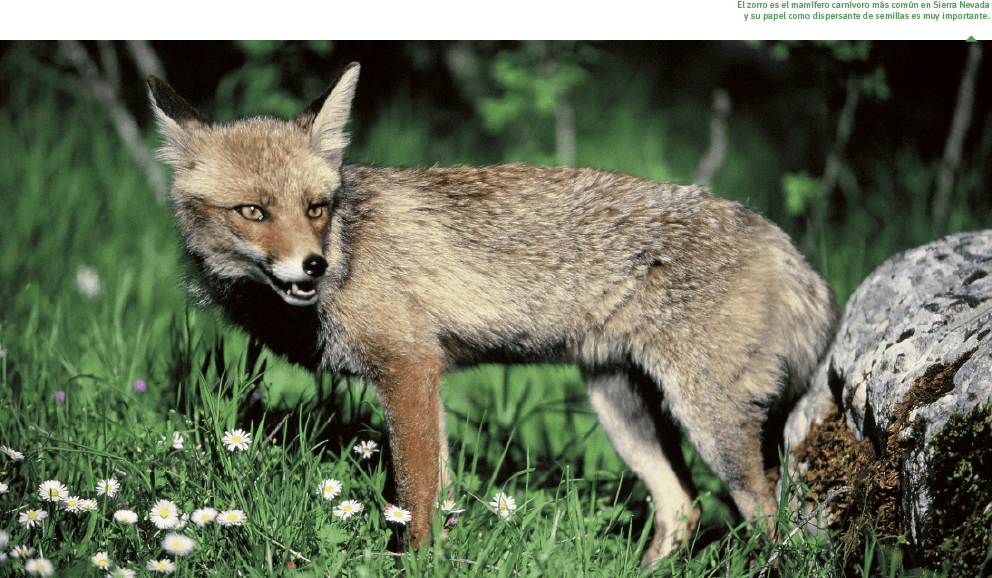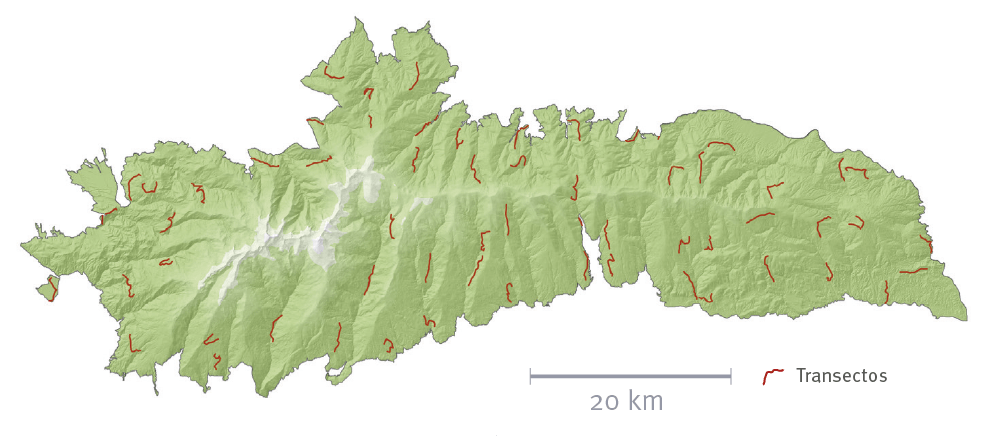Aims
The objectives of the monitoring of certain carnivorous mammal species within the framework of this monitoring project are to identify the distribution patterns, abundance, and habitat selection of the species monitored.

Method and effort
These species are: fox (Vulpes vulpes), beech marten (Martes foina), European badger (Meles meles), European wildcat (Felis silvestris), and common genet (Genetta genetta). To map the distribution and abundance of the mesocarnivore community in Sierra Nevada, we used a UTM grid with squares 5 km x 5 km as the study unit. All the complete UTM squares that contained at least 50% of land included in the protected area were studied, except for 6 squares where elevations of higher than 2,500 m predominated. In each square, we walked a fixed segment of 3 km.
In parallel, local studies are made of the carnivorous fauna by camera traps in order to detect species for which indices could be overlooked during the sampling of the transects (e.g. the common genet), species of low density but of high interest for our work (e.g. European wildcat)

Periodicity
The monitoring was performed four years apart, in 2007 and again in 2011. The camera trap was begun in 2011, after an experimental phase in 2010.
References
Barea-Azcón, J. M., Virgós, E., Ballesteros-Duperón, E., Moleón, M. y Chirosa, M. 2007. Surveying carnivores at large spatial scales: a comparison of four broad-applied methods. Biodivers. Conserv., 16: 1213-1230.
Boitani, L. y Fuller, T.K. (eds.). 2000. Research Techniques in Animal Ecology. Columbia University Press. New York, 435 pp.
O’Connell, A.F., Nichols, J.D. y Karanth, K.U. 2011. Camera Traps in Animal Ecology. Methods and Analyses. Springer. New York, 271 pp.